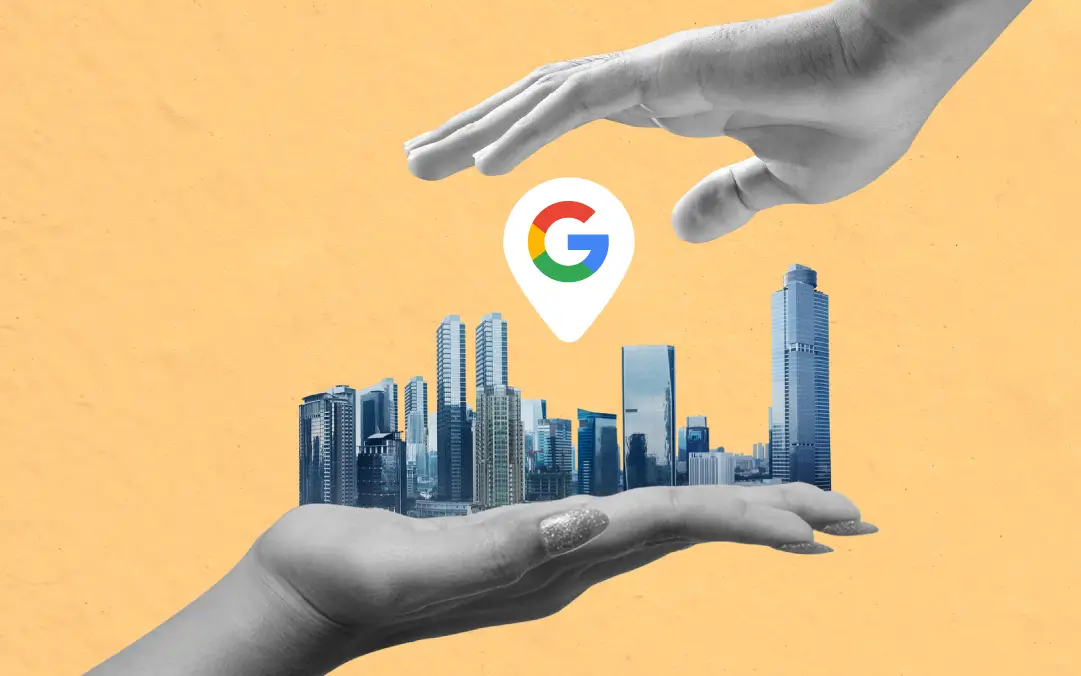Summary
SEO is evolving faster than ever. Thanks to generative AI, search has shifted from keywords to context, from clicks to answers. AIO (AI Optimization) is the new frontier. This guide will walk you through what AIO is, why it matters, and how to adapt your strategies to thrive in a world dominated by AI-powered search engines.
Welcome to the Age of AIO
Remember when SEO was all about keyword stuffing and meta tags? Simpler times. Today, we’re living in a search ecosystem shaped by generative AI, zero-click results, and algorithmic decisions made by models smarter than your last three interns combined.
Enter AIO, AI Optimization.
AIO isn’t just another acronym to throw around at conferences. It’s a fundamental shift in how we optimize content for visibility, engagement, and performance in a world where machines, not just humans, are reading, interpreting, and ranking everything we publish.
Let’s break it down, especially through the lens of how we’re helping businesses right here in Tampa, FL.
What is AIO?
AI Optimization (AIO) is the practice of tailoring your digital presence, content, structure, UX, and metadata, to be more easily interpreted and preferred by AI systems, particularly large language models (LLMs) like ChatGPT and Google’s Gemini.
Unlike traditional SEO, which optimizes for human behavior filtered through an algorithm, AIO optimizes directly for the algorithm, often with the understanding that the AI may be the end user.
That’s right. Your next visitor might not be a person at all, but an AI agent summarizing your content in a zero-click answer box.
Why Does AIO Matter Now?
Here’s what’s happening in real time:
- Google’s AI Overviews are taking up valuable SERP real estate
- ChatGPT and Gemini are being used as search engines OpenAI
- Meta posts are now indexed and surfaced in search
- Voice assistants and smart agents are replacing traditional queries
The takeaway? If your content isn’t optimized for machines to understand and summarize, you’re invisible, even if you’re ranking.
AIO vs Traditional SEO: What’s Changed?
| Traditional SEO | AIO |
| Keywords | Entities, context, and intent |
| Meta Descriptions | Structured data and semantic markup |
| Link Building | Knowledge graph integration |
| Human Readers | AI readers (LLMs, agents) |
| CTR and Bounce Rate Focus | Featured answers and summaries |
How to Optimize for AI: The AIO Playbook
1. Structure for Machines
Use schema markup. Break content into clear sections. Use HTML tags semantically (H1, H2, etc.). AI needs to parse, not just read.
(Helpful resource: https://schema.org/)
2. Write for Summarization
Use TL;DRs, bullet points, and section summaries. AI loves clean takeaways.
3. Embrace Entities, Not Just Keywords
Think: “what is this page about” vs. “what words does it use.” Google’s NLP models understand relationships between concepts.
4. Semantic SEO is Your Best Friend
Cover topics comprehensively. Use synonyms. Link related topics internally. Think like an AI trying to build a topic map.
5. Update Old Content with New Signals
AI isn’t just looking at freshness. It’s looking at quality, completeness, and structure. Upgrade your golden oldies.
6. Integrate Social + SEO
With Meta posts showing up in Google Search, your social strategy needs to support your search strategy. Share content with SEO-friendly captions, encourage engagement, and treat social posts like mini blog entries. Consistency here fuels authority everywhere.
7. Leverage Zero-Click Strategies
Instead of fighting AI Overviews, design your content to feed them. Use questions, structured answers, tables, and even internal summaries to increase the odds your content becomes the summary.
8. Invest in Visual Content
AI summarization isn’t just text-based. Infographics, diagrams, and video snippets are more indexable and valuable than ever. Make sure your media has strong metadata and clear context.
9. Experiment with AI Prompting
Content creation, keyword clustering, and outline generation can be sped up with prompt engineering. Use ChatGPT or Gemini to brainstorm meta titles, FAQs, and even schema recommendations.
Try These Prompt Templates:
- “Summarize this blog post for Google’s AI Overview in 2 sentences.”
- “Generate schema.org markup for a chiropractor’s service page.”
- “Suggest 10 long-tail keywords based on the topic: ‘plantar fasciitis treatment in Tampa’.”
10. Example: AIO in Action
One of our Tampa-based clients in healthcare saw a 48% increase in organic impressions after we restructured their content with schema, added TL;DR summaries, and implemented conversational headings. Bonus: that content was later featured in an AI Overview snippet on Google.
11. Plan Your Content for AIO
Don’t just write blogs, design clusters. Use pillar pages, subtopics, and social snippets to build authority across related themes. Repurpose pieces as videos, carousels, or infographics. Give AI the assets it needs to connect the dots and rank your content.
What Tools Help With AIO?
- ChatGPT / Gemini: Test how AI summarizes your content (OpenAI)
- Surfer SEO / Clearscope: Optimize for entities and NLP targets (Surfer)
- Google Search Console: Still gold for click and impression trends (GSC)
- Schema.org / JSON-LD generators: Add structured data quickly (Schema)
- Link Whisper: Use smart internal linking to strengthen topic authority
- Google Trends + Glimpse: Track trending questions for better featured snippet opportunities
Common Mistakes in AIO
- Writing only for humans
- Over-optimizing with keywords instead of context
- Ignoring schema markup
- Assuming ranking = visibility
- Not testing how AI bots are summarizing your pages
- Treating social and search as separate ecosystems
- Failing to structure content for summarization or repurposing
How AIO Impacts Every Stage of the Marketing Funnel
| Funnel Stage | Traditional SEO Approach | AIO-Driven SEO Approach |
| Awareness | Broad keywords, blog posts, organic impressions | Entity-rich content surfaced by AI in zero-click answers |
| Consideration | Comparison pages, gated guides | Summarized feature breakdowns via AI Overviews |
| Conversion | CTAs, contact forms, CRO-based landing pages | Prompt-friendly, structured copy ideal for agents + bots |
| Retention | Email content, retargeting ads | Smart content repurposed for LLM-trained engagement |
| Advocacy | Testimonials, reviews | UGC and social posts optimized for search indexing |
Analytics & AIO: Measuring What Matters
The shift to AIO doesn’t mean tracking goes out the window, it means it evolves. Traditional SEO KPIs like impressions, CTR, and keyword rankings still matter, but they’re no longer the full picture.
Start monitoring:
- How your content appears in AI Overviews (via incognito search + structured data testing)
- Which content is summarized by LLMs (test with ChatGPT and Gemini)
- Engagement across formats (video, social, blog clusters)
- Zero-click traffic proxies (rise in branded search, GMB calls/directions)
Google Search Console, GA4, and tools like AlsoAsked or Glimpse can help you track shifting discovery patterns and topic coverage. Pair those with on-page analytics and heat maps to get a clearer picture of what machines and humans are actually seeing.
Don’t Overlook Local: AIO + Google Business Profile
AIO isn’t just for global content strategies, it’s especially powerful for local SEO. Google’s AI Overviews often include regional and map-based results. To ensure your local business is visible:
- Keep your Google Business Profile (GBP) fully updated with accurate services, hours, photos, and posts.
- Use entity-rich service descriptions (not just “Plumber in Tampa,” but “Certified backflow prevention technician serving South Tampa’s historic districts”).
- Post weekly updates to your GBP with helpful, informative content, these are now showing in search.
- Add FAQs to your GBP listing and respond to reviews using local keywords naturally.
For service-area businesses especially, integrating AIO principles into your GBP content, summaries, schema, and semantically relevant posts, can amplify your presence across local and generative search surfaces.
What’s Coming Next in This Series
This is just the beginning. Over the next few months, we’ll dive deeper into each of these critical AIO topics:
- How Zero-Click Results Are Reshaping Traffic Strategies
- Leveraging Social + SEO Now That Meta Posts Are Indexed
- Prompting Cheat Sheets for SEO and Content Teams
- Visual Content That Wins with AI: Infographics, Carousels, and Video
- AIO Content Marketing Strategy: Building Intelligent Content Hubs
- Analytics & AIO: How to Measure Success in an AI-Driven Search World
- Local AIO: Optimizing Google Business Profiles for AI Visibility
Frequently Asked Questions
What’s the difference between SEO and AIO?
SEO is about optimizing content for humans filtered through algorithms. AIO is about optimizing content for the algorithms themselves, which may deliver summaries, answers, or contextual insights before a user even clicks.
Do traditional SEO strategies still work?
Yes, but only if they evolve. Keyword research, internal linking, and content depth still matter, but they must be wrapped in semantic context, structured data, and entity relationships to stay relevant.
Can small businesses benefit from AIO?
Absolutely. In fact, smaller brands can compete faster if they embrace AIO early, especially by building authority around niche topics AI systems can easily understand and recommend.
How does AIO impact paid media or social?
AIO-informed content can enhance ad relevance, improve landing page experiences, and power more intelligent, intent-driven campaigns. Social media content also contributes to indexed authority now that platforms like Meta are searchable.
How do I get started with AIO?
Start by auditing your existing content. Is it structured for machines? Are you using schema, summaries, and internal links effectively? Then build or update content clusters that address real questions and clearly signal topical relevance.
What’s Next? The Rise of AI Agents
AI bots that browse the web, book appointments, and answer questions are coming fast. If your content can’t be interpreted quickly by machines, you’re not just losing rankings, you’re out of the conversation entirely.
This is where UX, SEO, and content marketing collide. Smarter layouts, intuitive design, and clear context all support machine interpretation. Brand visibility in 2025 will rely just as much on how your content is delivered as what it says.
Final Thoughts
This isn’t about ditching SEO. It’s about leveling it up.
AIO is how you keep your content discoverable, your brand relevant, and your strategy ahead of the curve. At BrandMinded, a digital agency proudly based in Tampa, FL, we’re not just adapting, we’re helping local and national clients surf the algorithmic wave and win the attention of both humans and machines.
Because in the new search economy, visibility goes to the brand that knows how to speak AI.
Sources & Further Reading
- Google: Generative AI Search Updates
- OpenAI ChatGPT
- HubSpot: What Is Semantic Search?
- Schema.org
- Surfer SEO
Written by: BrandMinded Team – Helping forward-thinking brands thrive in the age of AI, one algorithm at a time.




